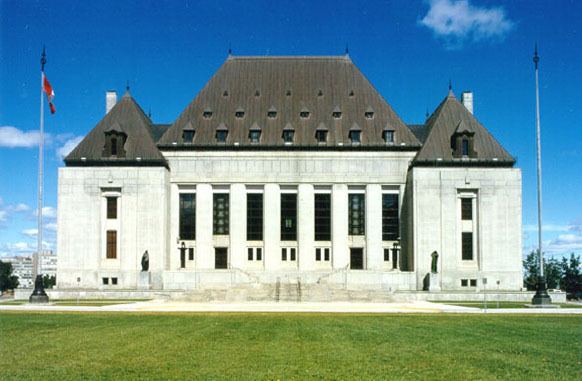Docket No. 32604 | Majority McLachlin C.J. | |
 | ||
Citations 2010 SCC 39 (CanLII), [2010] 2 SCR 536 Prior history Appealed from Laferrière c. Québec (Procureur général), 2008 QCCA 427 (CanLII), 48 M.P.L.R. (4th) 26, [2008] Q.J. No. 1597 (QL), 2008 CarswellQue 14277, reversing a decision of the Superior Court, Laferrière c. Lortie 2006 QCCS 3377 (CanLII), [2006] J.Q. no 5998 (QL), 2006 CarswellQue 5622, upholding a decision of the Court of Québec, Laferrière c. Québec (Commission de protection du territoire agricole) 2002 CanLII 41590 (QC CQ), [2002] J.Q. no 4771 (QL). Dissent Deschamps J., joined by LeBel J. | ||
Quebec (AG) v Canadian Owners and Pilots Assn, 2010 SCC 39, [2010] 2 SCR 536, also referred to as Quebec v. COPA, is a leading case of the Supreme Court of Canada on determining the applicability of the doctrines of interjurisdictional immunity and federal paramountcy in Canadian constitutional law.
Contents
The facts
An aerodrome, registered under the federal Aeronautics Act, was constructed on land zoned as agricultural in the province of Quebec. Section 26 of the Quebec Act respecting the preservation of agricultural land and agricultural activities (“ARPALAA”) prohibited the use of lots in a designated agricultural region for any purpose other than agriculture, subject to prior authorization by the Commission de protection du territoire agricole du Québec.
Since the Commission’s permission was not obtained prior to constructing the aerodrome, the Commission ordered the return of the land to its original state pursuant to the ARPALAA. The Commission’s decision was challenged on the ground that aeronautics is within federal jurisdiction.
The courts below
The Administrative Tribunal of Quebec, the Court of Quebec and the Superior Court of Quebec all upheld the Commission's decision, but the Quebec Court of Appeal found that interjurisdictional immunity precluded the Commission from ordering the dismantling of the aerodrome.
Decision of the Supreme Court of Canada
The appeal was dismissed. Interjurisdictional immunity was held to apply in the matter, under a two-part test that was stated by McLachlin CJ:
[27] The first step is to determine whether the provincial law ... trenches on the protected “core” of a federal competence. If it does, the second step is to determine whether the provincial law’s effect on the exercise of the protected federal power is sufficiently serious to invoke the doctrine of interjurisdictional immunity.
While ARPALAA is valid provincial legislation, it is inapplicable to the extent that it impacts the federal power over aeronautics. The federal aeronautics jurisdiction encompasses not only the regulation of the operation of aircraft and airports, but also the power to determine the location of airports and aerodromes. This power is an essential and indivisible part of aeronautics and, as such, lies within the protected core of the federal aeronautics power.
In prohibiting the building of aerodromes on designated agricultural land unless prior authorization has been obtained from the Commission, the ARPALAA effectively removed the total area of the designated agricultural regions from the territory that Parliament may designate for aeronautical uses. This is not an insignificant amount of land, and much of it is strategically located.
In the appeal, it had been argued by Quebec that interjurisdictional immunity did not apply where a law raises a double aspect. Although it was not necessary to decide that question, it was stated that the argument misapprehended the doctrine of interjurisdictional immunity:
The interjurisdictional immunity analysis presumes the validity of a law and focuses exclusively on the law’s effects on the core of a federal power.... What matters, from the perspective of interjurisdictional immunity, is that the law has the effect of impairing the core of a federal competency. In those cases where the doctrine applies, it serves to protect the immunized core of federal power from any provincial impairment.
The doctrine of federal paramountcy would not apply in this case.
Dissent
Deschamps J declared that the only difference between the present case and Quebec (Attorney General) v. Lacombe (which was released on the same day) was that Lacombe was concerned with municipal zoning and COPA with a provincial agricultural zoning scheme. She concluded that there was no evidence of an incidental effect that would amount to an impairment of the core of the federal aeronautics power.
Impact
This case, together with the concurrent case of Lacombe, has further added to the Court's jurisprudence on Canadian federalism in a significant manner. There has been discussion as to the consistency of these rulings in comparison to previous jurisprudence, but the Court's tests for paramountcy and interjurisdictional immunity in COPA have been cited in subsequent constitutional jurisprudence, especially in:
